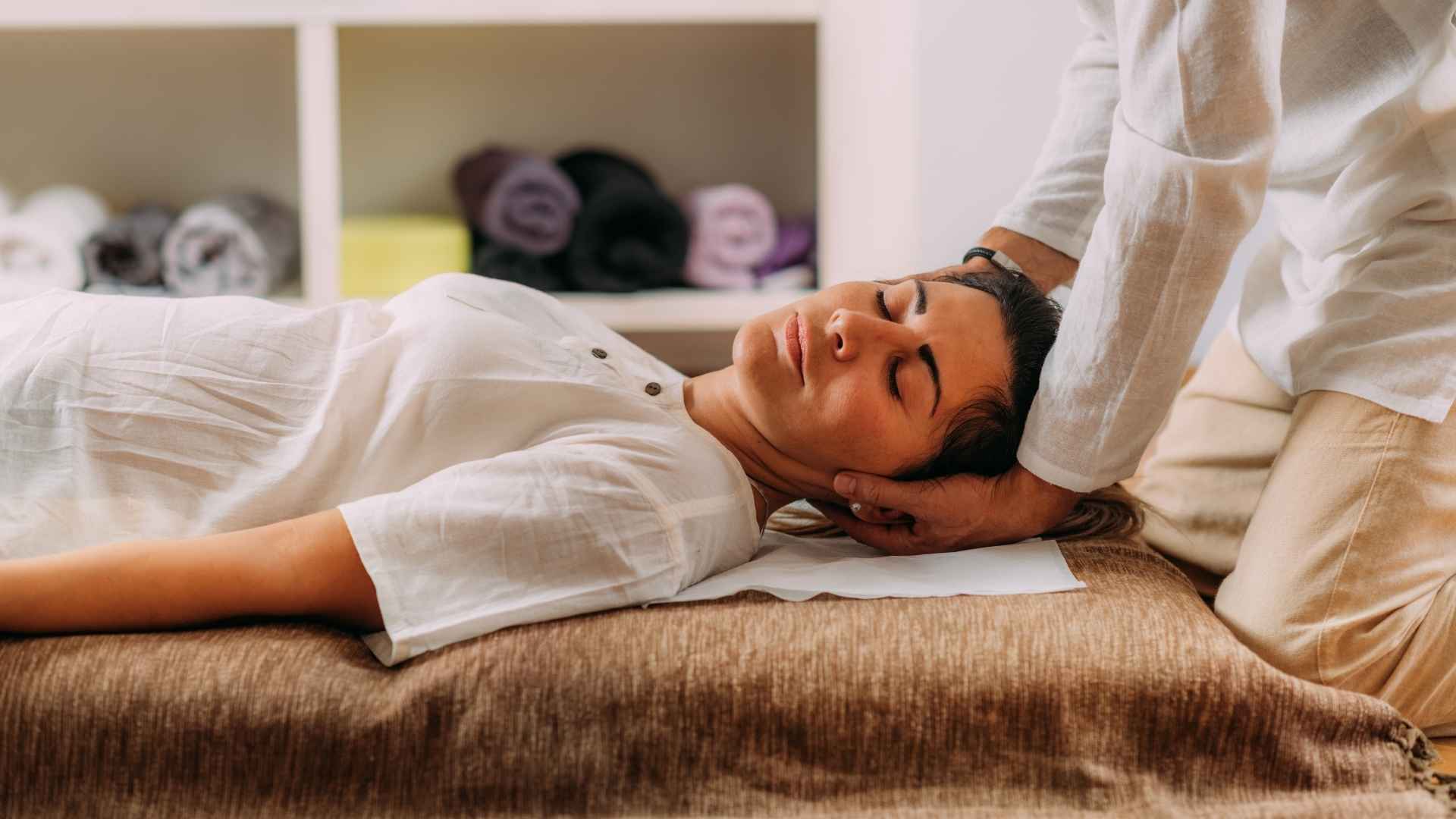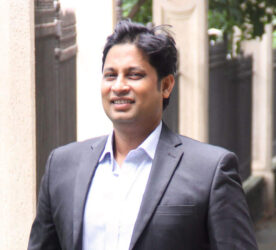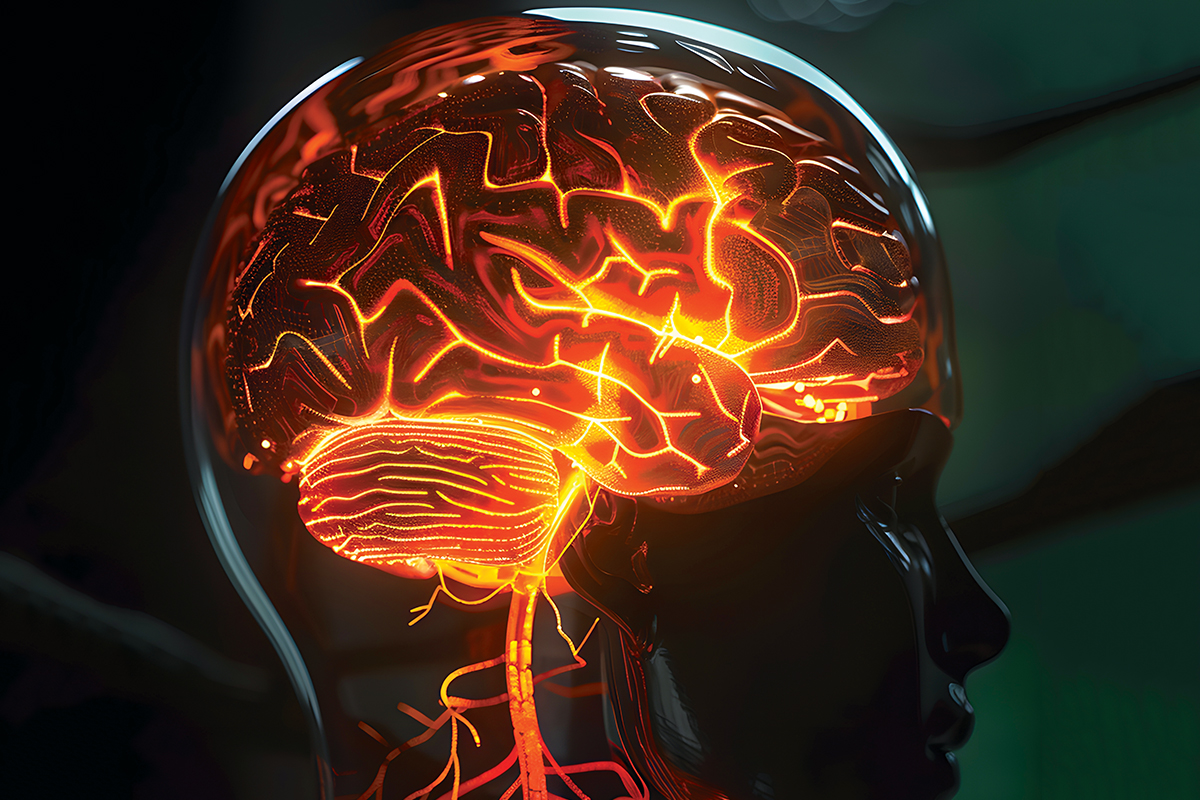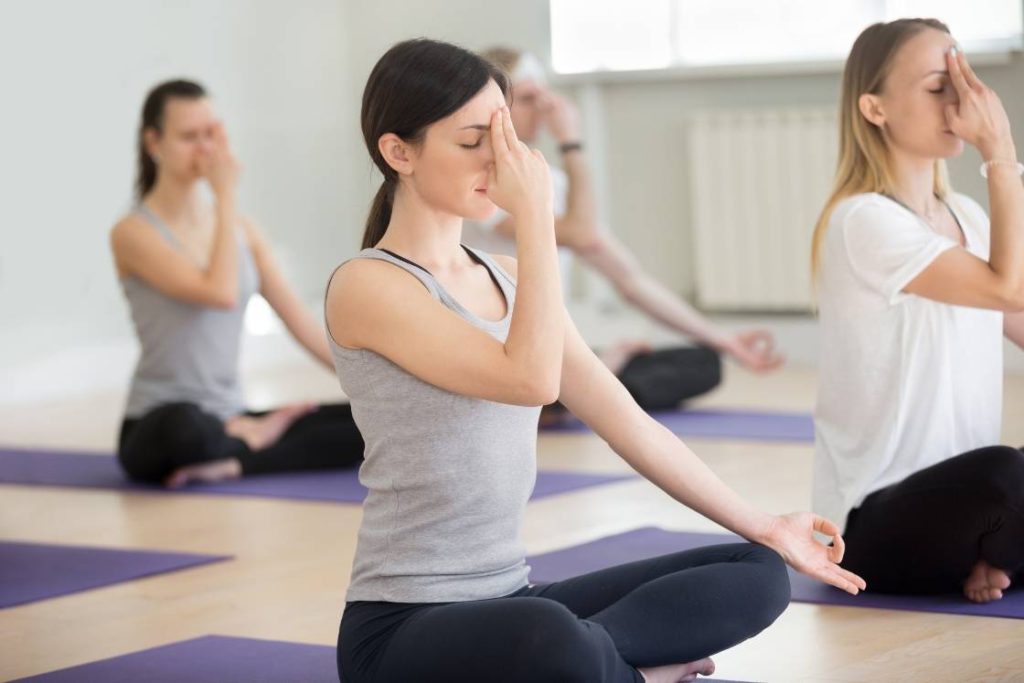In a world increasingly overwhelmed by stress, chronic illness, and digital disconnection, many are turning back to ancient healing practices for relief. One such therapy is reflexology—a holistic healing technique rooted in the belief that specific points on the feet, hands, and ears correspond to organs and systems within the body.
Reflexology isn’t just a foot rub—it’s a structured, therapeutic approach to wellness.
Imagine a woman in her 40s dealing with persistent migraines, sleep disturbances, and hormonal imbalances. Frustrated with medications and seeking alternatives, she tries reflexology on a friend’s recommendation.
Within weeks of consistent sessions, her headaches lessen, sleep improves, and she feels emotionally more grounded. Stories like hers are increasingly common, as reflexology grows in global popularity and becomes a trusted pillar in integrative health.
Historical Roots and Global Origins
The origins of reflexology trace back thousands of years. Ancient Chinese medical texts mention pressure therapy along energy meridians as a way to restore balance within the body.
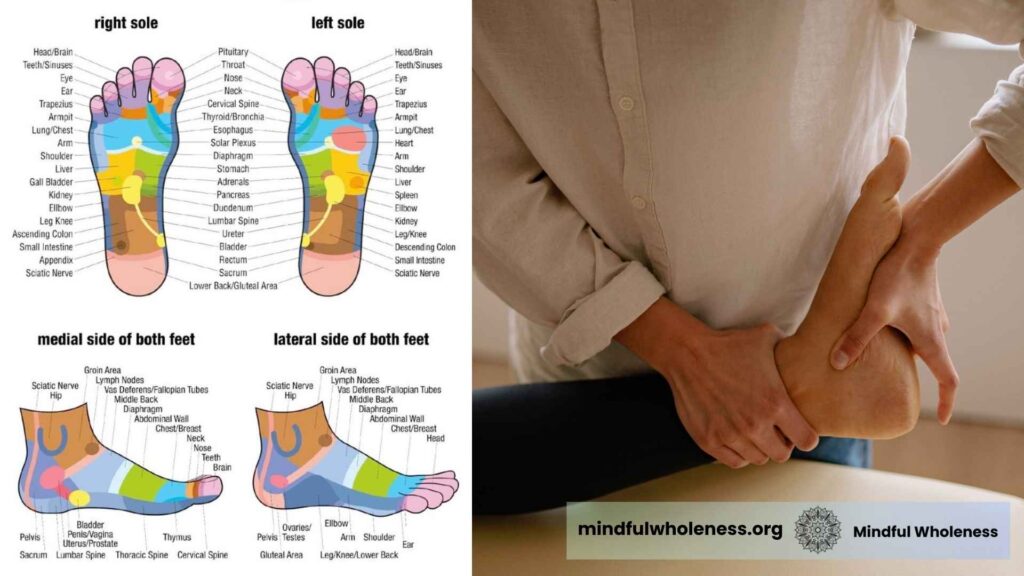
In Egypt, the tomb of Ankhamahor (around 2500 BCE) depicts practitioners applying pressure to the feet and hands of their clients. India’s Ayurvedic tradition also recognizes foot massage (Padabhyanga) as a vital aspect of maintaining health.
These ancient cultures viewed the feet not merely as functional limbs but as gateways to the body’s internal systems. Over centuries, these beliefs evolved into what we now call modern reflexology, formally structured in the 20th century by pioneers like Eunice Ingham in the United States.
Across the world, foot therapy holds cultural significance. In Thailand, it’s practiced as part of daily wellness. In Native American traditions, it’s tied to spiritual grounding. Reflexology thus carries not only physical healing, but cultural and energetic depth.
The Science Behind Reflexology
Reflexology operates on the idea that the body contains reflex maps—charts that connect specific zones of the feet, hands, and ears to internal organs, glands, and systems. For instance, the tips of the toes correspond to the head and brain, while the arch of the foot links to digestive organs.
When a trained practitioner applies pressure to these zones, it sends signals through the nervous system to the brain and the targeted area. This stimulation can trigger a relaxation response, improve circulation, balance hormones, and reduce pain perception.
Scientific studies offer support. A 2015 study in the Journal of Obstetrics and Gynaecology showed that reflexology helped reduce labor pain. Another 2011 study in Nursing & Health Sciences found that foot reflexology significantly lowered anxiety in patients undergoing coronary care.
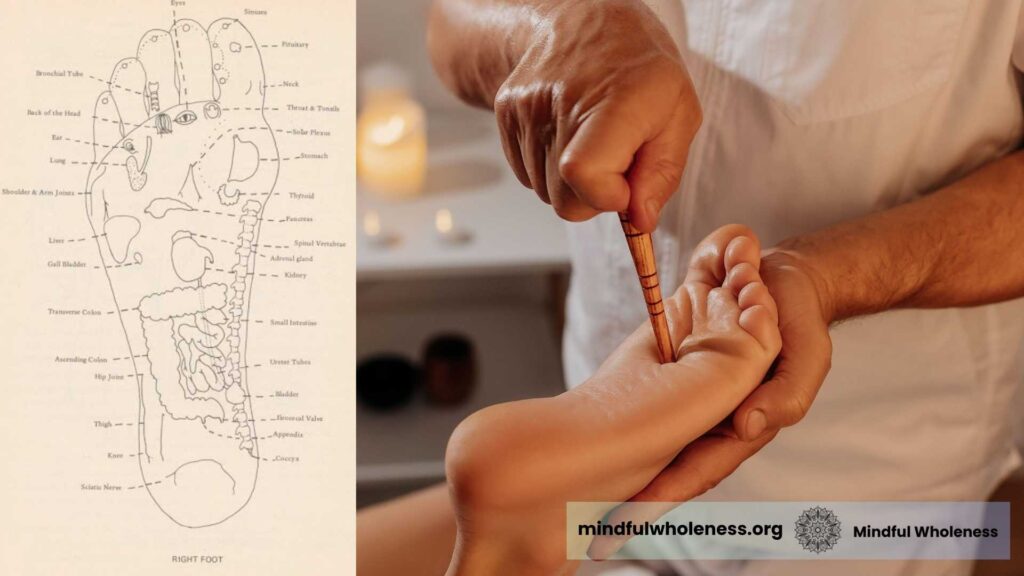
While more rigorous research is needed, preliminary findings support its neurological, hormonal, and circulatory benefits—validating what traditional systems have long known.
Benefits of Reflexology
The list of benefits associated with reflexology is extensive. It is especially valued for its ability to:
Reduce stress and induce deep relaxation, calming both the mind and the nervous system. Improve blood circulation, which enhances nutrient delivery and detoxification. Reset the nervous system, promoting better sleep and emotional equilibrium.
Help with chronic pain management, especially in conditions like headaches, sciatica, and arthritis. Support hormonal balance and digestive health, while boosting overall wellness.
Take the case of Ravi, a 60-year-old man suffering from back pain and irregular digestion. After eight reflexology sessions, his symptoms reduced significantly, and he experienced fewer flare-ups. Clients like Ravi often report not just physical relief but enhanced emotional clarity and groundedness.
What to Expect in a Session
A typical reflexology session begins with a brief assessment where the practitioner may ask about your health history and goals. You’ll then lie down or sit comfortably while the therapist applies targeted pressure, mostly using their fingers and thumbs.
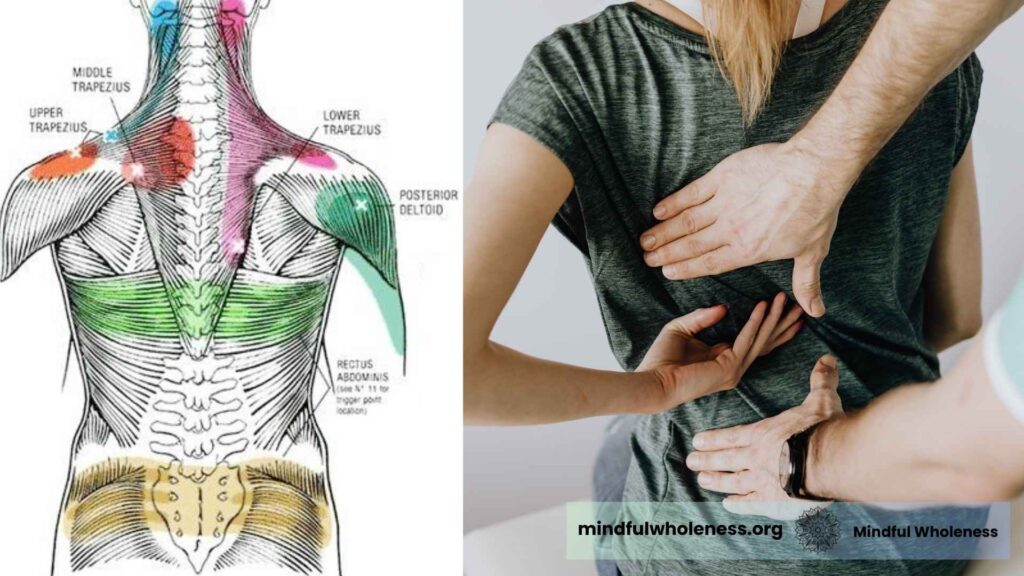
Sessions usually last between 30 to 60 minutes. Some practitioners incorporate reflexology tools like wooden sticks or essential oils to enhance stimulation.
People often feel sensations of tingling, warmth, or even emotional release. After a session, clients commonly report feeling “lighter,” more relaxed, or rejuvenated. Though mild soreness can occur, it usually subsides quickly.
Hygiene, certification, and ethical touch are core principles of professional reflexology. Always ensure your therapist is qualified and certified through a reputable reflexology board or institution.
Reflexology vs. Massage Therapy
It’s a common misconception that reflexology is just a fancy foot massage. In reality, the two therapies differ significantly in intent and technique.
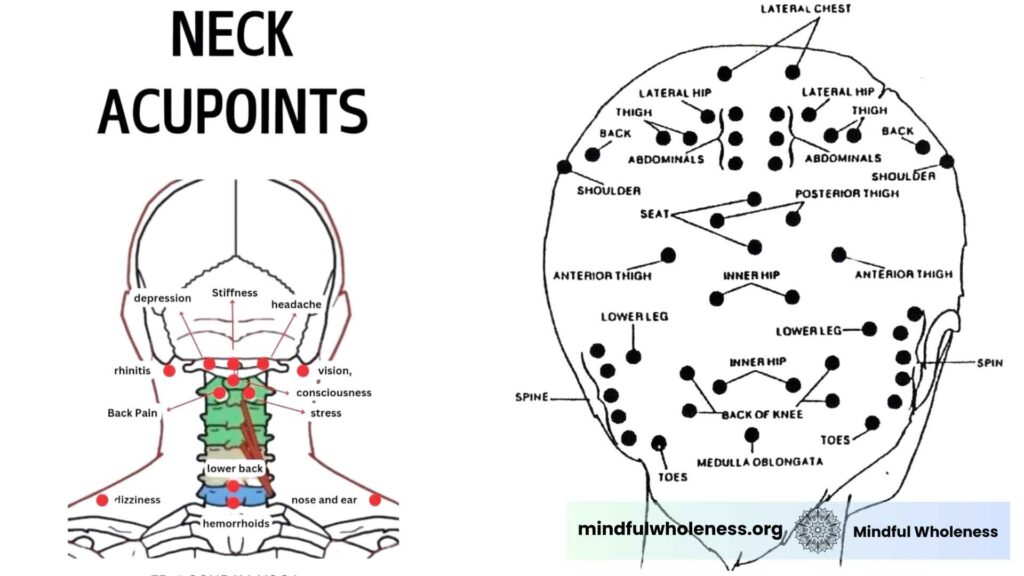
Massage therapy focuses on manipulating muscles and tissues to relieve tension, improve mobility, and ease soreness. It works primarily on the musculoskeletal system.
Reflexology, however, targets specific reflex points that correspond to organs and internal systems. Its focus is systemic, not muscular.
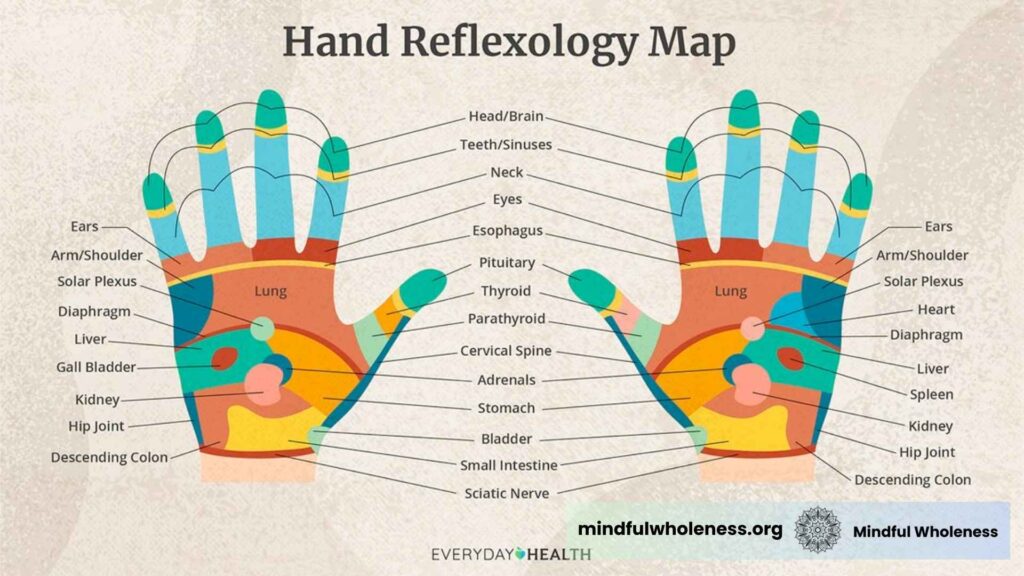
Choose reflexology if you’re looking for internal balance, stress relief, or hormone support. Opt for massage therapy if you want muscle relaxation or are recovering from physical exertion.
Who Should Try Reflexology
However, it’s not suitable for everyone. People with certain medical conditions like foot injuries, blood clotting disorders, or severe circulatory problems should consult a healthcare professional before undergoing reflexology.
Pregnant women can benefit too, but they must work with practitioners trained in prenatal reflexology to ensure safety.
Reflexology in Modern Wellness
Reflexology has moved beyond ancient scrolls and wellness retreats—it is now part of modern medical ecosystems. It’s used as a complementary therapy in hospitals, cancer centers, mental health care programs, and rehabilitation facilities.
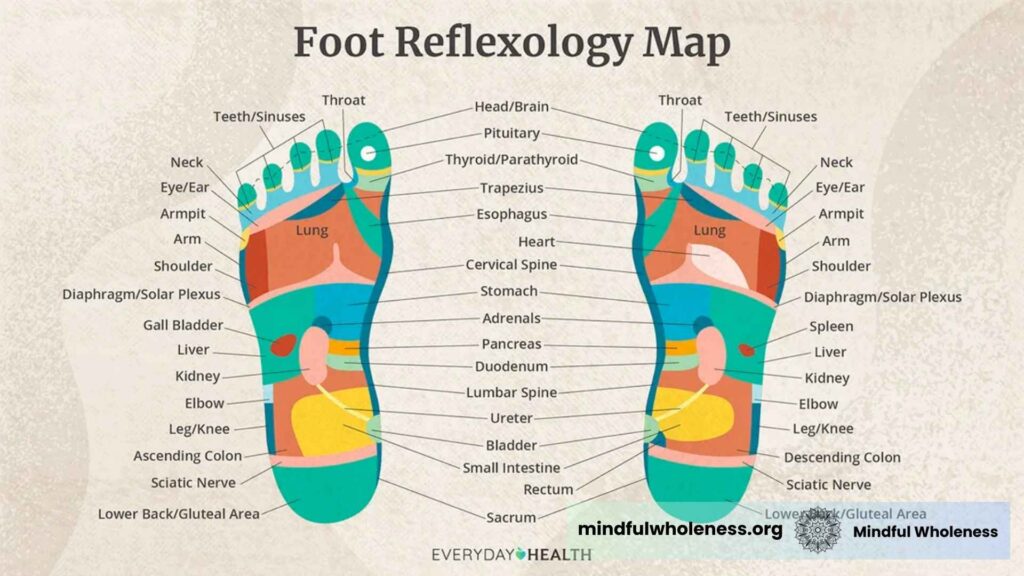
In India, initiatives like AYUSH integrate reflexology into public health approaches. Globally, countries such as the UK and Sweden have recognized it as part of holistic nursing care. Spas, yoga centers, and even corporate wellness programs now include reflexology as a stress-relief modality.
Case studies show that in Mumbai’s Dharavi area, community-led reflexology programs trained local women as practitioners. They now offer services while earning a livelihood—creating a dual impact of wellness and employment.
Reflexology as a Sustainable and Natural Healing Practice
In today’s era of climate crisis and medical overconsumption, reflexology stands out as a healing art that is not only natural but deeply sustainable.
Non-Invasive & Low-Resource Therapy
Reflexology needs no pharmaceuticals, no machines, and no electricity. It’s a low-carbon therapy powered by human touch. Unlike high-tech interventions, reflexology leaves a minimal ecological footprint—making it an ideal solution in both urban and rural settings.
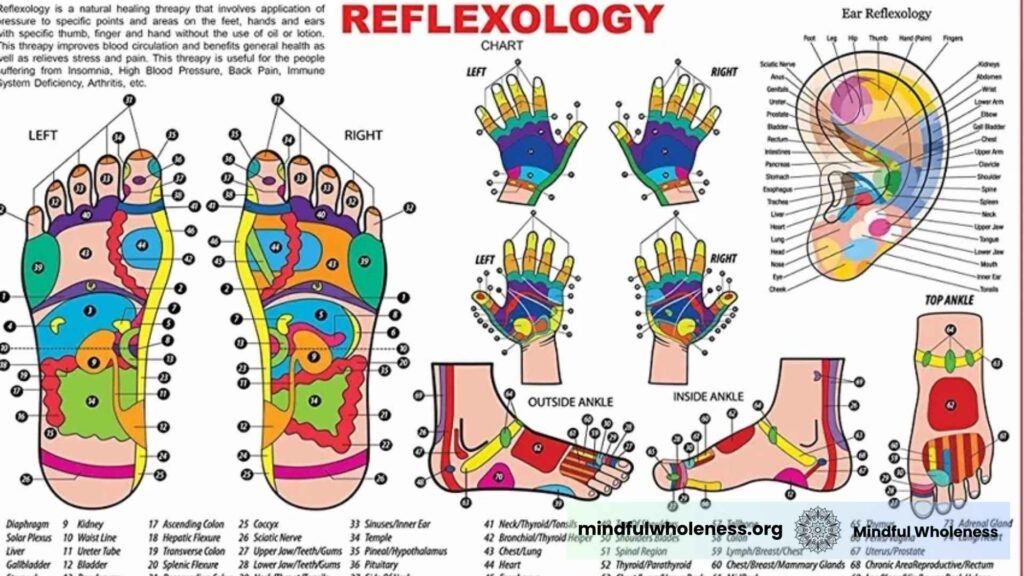
Reducing Dependency on Medication
Chronic pain, insomnia, and anxiety are often treated with chemical drugs—but they come with side effects and waste. Reflexology offers a safer, long-term alternative. Clients often report needing fewer painkillers, sleep aids, or digestive pills after consistent therapy.
Empowering Community Wellness
In underserved communities, reflexology offers not just healing but hope. With minimal training, individuals—especially women—can learn the technique and provide affordable care. It becomes both a health service and income stream, advancing sustainable development goals in health and economic growth.
Rooted in Earth Wisdom
Reflexology mirrors systems thinking: just as each organ connects to the whole body, each human connects to the ecosystem. It teaches us to respect the body’s rhythms and seek balance, not domination—much like sustainability aims to harmonize human activity with nature.
Touch as Medicine in a Disconnected World
In an increasingly digital age, reflexology reintroduces therapeutic touch—something deeply human and healing. It reminds us that not all medicine comes in bottles. Sometimes, the most profound healing comes through presence, empathy, and skilled hands.
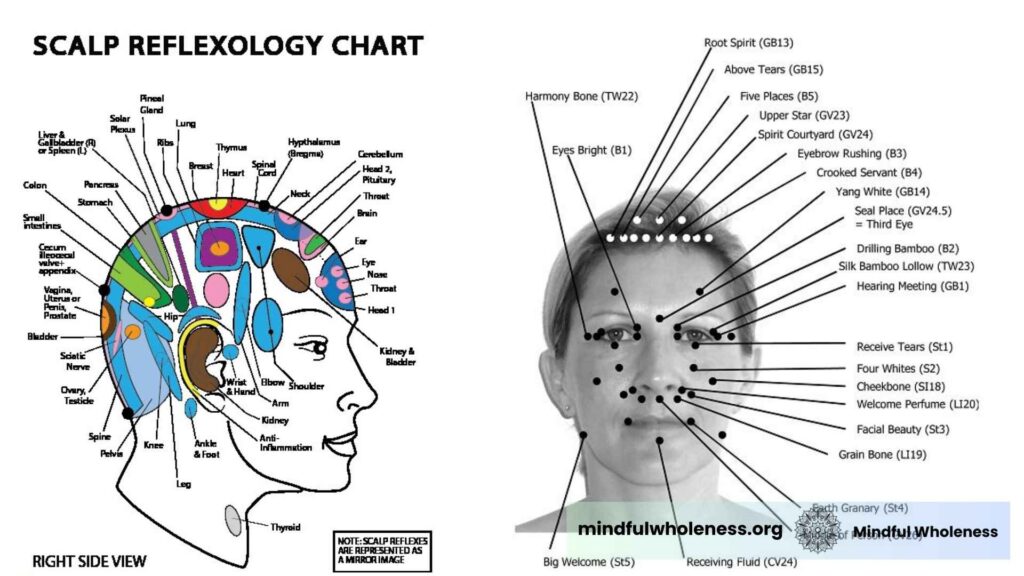
Reflexology is more than just a wellness trend—it’s a powerful, sustainable practice that bridges ancient wisdom and modern science. Whether you’re seeking physical relief, emotional calm, or spiritual grounding, reflexology offers a path to healing that honors both the body and the Earth.
As we rethink healthcare in the 21st century, reflexology invites us to pause, breathe, and reconnect—with ourselves, our communities, and the planet.
Frequently Asked Questions (FAQs) About Reflexology
What is reflexology and how does it work?
Reflexology is a natural therapy that involves applying pressure to specific points on the feet, hands, and ears. These points are believed to correspond to different organs and systems in the body. Stimulating these reflex points helps restore balance, promote healing, and encourage overall wellness.
Is reflexology the same as a foot massage?
No, reflexology is not the same as a foot massage. While both involve the feet, reflexology targets specific pressure points linked to organs and systems in the body, whereas massage therapy focuses on muscles and soft tissue for relaxation and pain relief.
What are the main benefits of reflexology?
Reflexology can help reduce stress, improve circulation, boost sleep quality, manage chronic pain, balance hormones, and support emotional well-being. Many also report feeling deeply relaxed and grounded after sessions.
Is reflexology scientifically proven?
There is growing scientific evidence supporting reflexology’s effectiveness in reducing pain, anxiety, and stress. However, more large-scale studies are needed to fully validate all its claims in conventional medicine.
How long does a typical reflexology session last?
A typical session lasts between 30 to 60 minutes, depending on the practitioner’s approach and the client’s needs.
Does reflexology hurt?
Reflexology should not be painful. Some areas may feel tender or sensitive, especially if there’s an imbalance in the corresponding organ or system. Most people find the sensations pleasant and relaxing.
Can reflexology help with chronic pain?
Yes, reflexology is often used to manage chronic pain conditions like migraines, backaches, arthritis, and nerve pain. It helps by promoting relaxation, improving blood flow, and releasing natural pain-relieving chemicals in the body.
Is reflexology safe for everyone?
Reflexology is generally safe for most people. However, it should be avoided by individuals with open wounds, infections on the feet, blood clotting disorders, or certain circulatory issues. Pregnant women should consult a certified prenatal reflexologist.
Can pregnant women try reflexology?
Yes, reflexology can be very beneficial during pregnancy, helping with stress, hormonal shifts, and swelling. However, it should only be done by practitioners experienced in prenatal reflexology to ensure safety.
How many sessions are needed to see results?
Some people notice benefits after just one session, while others may need multiple sessions over a few weeks to experience lasting results. The number depends on the individual’s condition and wellness goals.
Do reflexologists need to be certified?
Yes, it’s best to work with a reflexologist who is trained and certified through a recognized board or association. This ensures professionalism, hygiene, and safety standards are met.
Is reflexology used in hospitals or clinics?
Yes, many hospitals and wellness centers now offer reflexology as a complementary therapy, especially for stress reduction, cancer support care, and chronic illness management.
Can I do reflexology on myself at home?
Yes, self-reflexology is possible with the help of maps and tools, though the effects may be milder than professional sessions. Regular self-care techniques can still help promote relaxation and basic wellness.
Are there any side effects of reflexology?
Most people experience no side effects. Occasionally, people may feel light-headed, fatigued, or emotional after a session as the body rebalances. These effects are temporary and usually fade quickly.
Is reflexology covered by health insurance?
Coverage varies by country and insurance provider. In some countries, reflexology is recognized as a complementary therapy and may be covered partially under wellness or alternative health plans.
How does reflexology support mental health?
Reflexology helps activate the parasympathetic nervous system, which lowers stress hormones, eases anxiety, and creates a deep sense of calm. It can be especially beneficial for people dealing with depression, anxiety, or trauma.
What’s the difference between reflexology and acupressure?
Reflexology targets specific reflex zones on the feet, hands, and ears that mirror internal organs. Acupressure works along energy meridians across the entire body. Both are based on traditional healing systems but use different maps and techniques.
Can children receive reflexology?
Yes, reflexology can be safely used for children, especially to help with sleep, anxiety, and digestive issues. Sessions for children are usually shorter and gentler.
How does reflexology contribute to sustainability?
Reflexology is a low-resource therapy—it requires no machines, no pharmaceuticals, and very little infrastructure. It aligns with eco-friendly healing principles and reduces dependency on synthetic drugs and their waste byproducts.
Can reflexology be a career or livelihood option?
Absolutely. Reflexology can be taught and practiced professionally, especially in communities with limited access to medical care. It offers a sustainable livelihood option and empowers individuals to provide accessible wellness services.

